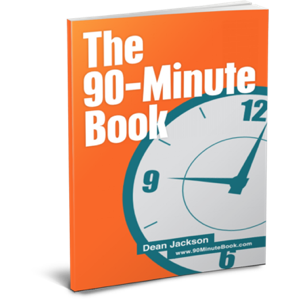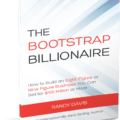What’s your writing process like? When someone asks a writer how much they make, their initial reaction is usually dismay or refusal to answer. Nevertheless, the answer is still, “It varies.” It depends on the project, the subject, my mood…”
The writing process is personal to the writer. They may have a single system that they firmly believe in or various methods that they can select from. The environment around you can impact your writing – from where you set up to write to how long you work on it. Planners approach writing strategically. “Individuals who take risks and follow their instincts instead of relying on advance planning abhor being restricted.”
The purpose of standard writing process steps is not to dictate how an author works. Rather than offering specific instructions, authors are provided with an overall organization to borrow from, take ideas from, or ignore. If you are new to being a writer or have been writing for a while and want to refine your procedure, think about trying the following advice.
Step 1: Prewriting
Occasionally you will be fortunate enough to have a notion, take a seat at your PC, and let your ideas pour onto the keys. Your hard work has come to fruition in no time, and you have prepared a refined article for printing. If things don’t go as anticipated, you must have a system to get started. Stop staring at a stark white page and do this instead:
Decide What to Write About
The subject matter of your writing hinges upon who the audience is. You could be given a project regarding a broad subject to which you can give your own interpretation, or you may receive a task with precise instructions to adhere to. If you are writing with an assignment, review the criteria thoroughly so you do not regret spending time developing something that does not follow the directions. Alternatively, if you write for yourself, you can pick any topic.
Good topics should be such that they are capable of providing answers to queries, resolving issues or simply addressing the individual’s current issues. Where do people complain? On the Internet. Investigate blog entries concerning the subject you are writing about (or intend to compose) and then peruse the remarks afterward. What did the writer miss that you can cover? Head to Twitter and Reddit, two goldmines for complaints. If you’re looking for information about nearby places, take a look at review websites such as Yelp. As long as some are not content, you will have a plentiful reservoir of ideas to pick from.
Flesh Out Your Idea
Once you have a fundamental concept, to begin with, you can further develop it. This task can be achieved by either utilizing a standard outlining format or brainstorming maps and free-writing. Artwork can have different appearances, such as being minimalist or ornate, paper-based or digital. Whatever – it just has to work for you.
During this step, you’ll be doing your research. Even if you have a good understanding of the subject, researching enables you to discover ideas they hadn’t previously considered.
Choose a Topic That Interests YOU
This idea that “No joy for the writer, no joy for the reader” should be taken seriously, whatever kind of job you may have as a blogger. Making sure this phrase is followed should be of utmost importance.
Before starting any of the following procedures, it is important to choose a subject that you actually find interesting. No amount of effort can save a blog post if the writer does not have enthusiasm. It’s easy to tell when an author is not interested in the topic they are discussing, which can lead to an uncomfortable, uneasy sensation.
Finalize the Structure
When you complete your brainstorming, you could have a confused cluster of concepts. Even if you have organized your thoughts, they could still be in a jumbled sequence. Before setting pen to paper, take the time to organize your thoughts to facilitate understanding. If you decide to eliminate any ideas, save them somewhere. You may want to use them in the future, or maybe you can even create a related article.
As you work, write down ideas for the beginning and end of your assignment. Concepts that work well in intros and conclusions include:
- Unexpected or jarring statements
- An overview of the main problem people face
- An overview of how to solve that main problem
- Hope for the future if your advice is followed
- Deep thoughts that don’t fit well into any one section
The beginning and endings of your writing can be difficult to formulate, but having a collection of ideas handy while writing the main body of your essay will make the task of forming these much simpler.
Pro Tip: Get Started Early
If you start your work ahead of time as opposed to waiting until the last minute, it will make your life much simpler. You need to devote entire day(s) to planning, as it may consume much of your time. It doesn’t necessarily need a full day to plan the project, but it could be the only task accomplished during that day.
Writing is a strange animal. On particular occasions, the subject you most fear is produced without difficulty. No matter how hard you try, sometimes a subject you are interested in won’t form into writing. Proficient authors must continue to produce work even when their mental state, feeling and strength are not up to par. Beginning early is beneficial since this task is difficult; it allows you to divide the work into smaller pieces that can be done daily or to delay tackling it if necessary.
Step 2: Writing
Depending on the duration of your writing experience and your knowledge of the subject you’re writing about, you may go straight to this step and pass over prewriting. At times, authors can form a basic comprehension of a subject (such as recognizing the working title), develop a rough outline mentally and then enhance it by alternating between researching and writing. As you write, a plan for the document will naturally form, and you may need to adjust and change the order of things as you progress.
It’s time to start the writing process, regardless if you first want to make pre-writing plans or go ahead and start writing. Put those words down on paper! When composing a rough draft, you don’t have to be careful with spelling, grammar, or word count. However, everyone has their own approach to this part of the writing process. Some people think that being too concerned about mistakes hinders their writing, and it’s better to concentrate on getting their thoughts down on paper and then revise them later. Some people prefer a neater initial draft since they find it hard to focus when there are mistakes, believing that making corrections along the way results in a higher-quality end product. You do you.
Pro Tip: How to Hit Your Word Count
Articles about writing advice often recommend exceeding the word limit in an initial draft. The concept is to reduce a lot of text and rearrange words and phrases to make the sentences more easily understandable, which will decrease the number of words used. I’m going to suggest that you do the opposite.
Come to within 100 words of the desired word count – it is acceptable to be 100 words lower than the target figure. As you revise and check for errors, you will discover sections of your work where you haven’t clarified your ideas.
Step 3: Using Images Effectively
Composing for the internet is an altogether distinctive experience from preparing written material for publication. Sometimes individuals just do not possess the resources, wish, or aptitude to concentrate on lengthy blog entries without some type of visual enticement. A blog post utilizing just words will likely cause readers to lose focus quickly and return to other platforms, like Reddit and Twitter. This is why it is important to include pictures in your blog posts.
Images Help Your Blog Post Flow More Effectively
Including pictures in blog posts is extremely important as it helps to separate the written information. Many people simply glance over blog posts rather than carefully read through every word; including images throughout the writing makes the post appear more attractive and less overwhelming.
Images Make Great Visual Punchlines
Using humor in your posts can make them more enjoyable and help to cheer up your readers. A cleverly chosen image is the ideal way to brighten up the mood and bring a laugh to the conversation. This can be especially successful when discussing a dull (or absolutely monotonous) topic.
Images Make Complex Topics More Easily Understandable
A candid look at it indicates that digital marketing (along with countless other specialized subjects) can be overwhelming for newbies. Using visuals as part of your blogging strategy is imperative if you’re hoping to bring in new readers. Including visuals like diagrams, charts, infographics, tables, or other illustrations can assist readers in comprehending difficult ideas and comprehending the concepts you are trying to explain.
Step 4: The Editing Part
Actually, writing a blog post is hard. Editing a blog post is harder. A common misconception is that editing merely consists of deleting sentences that aren’t effective and correcting syntax errors. Although grammar and sentence formation are both very important, when it comes to editing, you need to consider the entirety of the piece and, at times, be prepared to delete words (and the time spent writing them) to ensure the text flows properly.
Be sure to double-check your spelling and grammar; that is something you should always do. These are some ideas for revising your writing to make it more powerful and keep readers engaged.
Avoid Repetition
When reading, it can be unsettling to encounter frequent repetitions of particular words or phrases. After writing the initial version of your blog article, review it and look for words that can be substituted to prevent redundancy.
BONUS: Every writer has a “crutch” word or phrase. Regardless of the caution employed, the writer can’t resist using this expression in their writing. Determine which word you use too often, be aware of it, and ensure you don’t use it in excess.
Read Your Post Aloud to Check Flow
Many authors gain knowledge of this method from workshops. If the words sound strange when spoken out loud, the written piece will likely appear clumsy when read by an audience. Test your post out loud to see if there are any cumbersome words or awkwardly constructed sentences. Find yourself struggling with the flow of a sentence? Rework it until it rolls off your tongue.
Have Someone Else Read Your Work
This is crucial for inexperienced or casual bloggers. Inquiring a chum or coworker to assess your effort is not an indication of deficiency or a symbol of defeat – it is a resolve to make your effort as robust as possible.
It’s preferable to request the help of someone with prior knowledge in editing to review your work. Ensure that your readers understand that you don’t need help identifying spelling and grammar mistakes (but if they do spot them, that’s nice!). Still, you’d like to hear their opinions on the organization and structure of the text and if it reads logically. Do your points come across well? Is your position on a contentious topic clear? Does the piece incite the reader to reflect or contradict a prevailing opinion? Is the advice you’re offering worth following? Having someone else look over your work can be beneficial in addressing any doubts or queries you may have.
Keep Sentences Short and Paragraphs Shorter
Big chunks of text can quickly frustrate and irritate a reader. It’s a common mistake for inexperienced bloggers to make.
Sentences should be as short as possible. They’re easier to read, making your audience’s job easier. Decreasing the length of sentences lowers the chance of straying from the subject. As an example of errors to avoid, I recently encountered an opinion article in Wired that featured an enormous mistake: a sentence comprised of a whopping seven subordinate clauses.
Paragraphs should also be short and sweet. The shorter you make each paragraph, the higher the chance your readers will stay engaged. Adhering to the standard guidelines for structuring a paragraph has become more flexible in web-based publishing; however, try your best to keep each thought within its own brief and organized paragraph.
Step 5: Publishing
There are numerous outlets where one can disseminate a finished work. If you are writing for yourself solely, you can choose to keep it on your computer without a set deadline or make it visible to the public by publishing it on your website or producing it as an electronic book.
Accept That Your Blog Post Will Never Be Perfect
You should not expect to have flawless posts, so it is best to accept this now.
Unless you’re Seth Godin, you’ll need to write more than one article per month; taking too much time to craft every post will discourage you from continuing to write, suck up a lot of your time, and will most likely draw the ire of your editor or content manager.
Ensure that each post is of the highest quality possible, take away any knowledge you can from the experience and then proceed forward.
Don’t Be Afraid to Make Cuts or Adapt on the Fly
Unless there is something that you must absolutely put in (perhaps, a section that your sales staff or management group is anticipating in a post that you committed to delivering), your plan is not definitive. Do not forget that an outline is just a general recommendation, not an absolute set of rules that must be followed precisely. Do not be afraid to eliminate whatever isn’t working, such as a phrase, a paragraph, or an entire piece. Be ruthless with your work.











